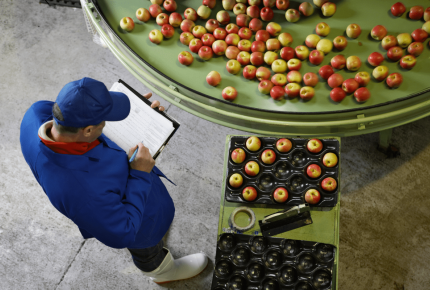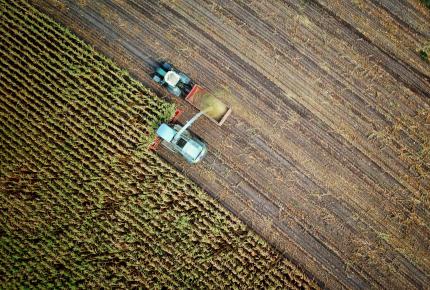Society
The new EU Farm to Fork strategy: what it means for the food industry
Jun. 9 2020
The EU’s flagship food policy was unveiled at the end of May, confirming the EU Commission’s ambition to make Europe’s food system a global leader in sustainability. We take a look at the key impacts for actors along the food chain – and how the policy will be put into practice.
Reduce the environmental footprint. Protect food security. Ensure access to sustainable, healthy, affordable food for all. The EU’s ambitions for its food system, set out in its long-awaited Farm to Fork strategy, amount to a transformation in how food will be produced and sold across the bloc. The strategy is a central pillar of the European Green Deal, a strategy designed to make Europe the first climate-neutral continent by 2050.
Proposals are wide-ranging and detailed, with 27 actions covering areas ranging from organic and biodiversity to carbon sequestration and development of bio-refineries. They cover the entire food value chain, starting with the types of animal feed available to producers through to consumers’ understanding of use-by dates on packaging. And they are supported by indications of how the strategy can be delivered both at a policy and financing level and by companies.
A strategy structured around ambitious targets
The EU Farm to Fork strategy’s actions are underpinned by concrete targets to 2030. These targets are important as they will form the basis of member states’ strategic plans and data collection by stakeholders throughout the food chain. They include:
-
Pesticides: reduce the use and risk of chemical pesticides by 50% and the use of more hazardous pesticides by 50%
- Excess of nutrients: reduce nutrient losses by at least 50% while ensuring there is no loss in soil fertility, and reduce fertilizer use by at least 20%
- Antimicrobial resistance: reduce EU sales of antimicrobials for farmed animals and in aquaculture by 50%
- Organic: 25% of the EU’s agricultural land to be under organic farming
- Waste: reduce food waste at a retail and consumer level by 50%
Alongside these food-specific targets, an overall climate target will also impact the food industry: a reduction in GHG emissions of at least 50%[1].
Incentivizing sustainable practices
The strategy recognizes significant efforts made to date by the food industry. It aims to make these the norm via mechanisms such as the Common Agricultural Policy (CAP), the Common Fisheries Policy (CFP), new “eco-schemes” and existing instruments such as the European Agricultural Fund for Rural Development (EAFRD). It cites several examples of initiatives that could, in the future, be rewarded under CAP. These include farming practices that remove CO2 from the atmosphere, and the installation of solar panels on the roofs of agricultural buildings. Practices that reduce the use of pesticides and fertilizers are also linked to CAP. An additional €10 billion is earmarked for research and development.
Food producers, processers and retailers are likely to welcome any financial support the EU is able to provide. Yet the EU executive is acutely aware that financing is only one aspect of the equation. Practicalities loom large and the change demanded is rapid: in the past, red tape has hindered some of the food industry’s best efforts at innovation.
The EU recognizes this, saying for example that it will facilitate the placing on the market of sustainable and innovative animal feed additives that help reduce methane emissions from livestock. To protect seed security and diversity, it will also facilitate the registration of new seed varieties, including for organic farming, and ensure easier market access for traditional and locally-adapted varieties.
The threat of regulation
While it is important to recognize that the Farm to Fork strategy represents a vision rather than a regulation, its authors make no bones about their intentions. A legislative framework for a sustainable food system is slated for 2023, and other policy initiatives are planned, including an Action Plan on organic farming and legislation on single-use food packaging.
On specific issues the Commission has said it will monitor commitments and legislate if necessary. A key area of the strategy deals with the sales and marketing practices of food processors and retailers. Under the EU code of conduct for responsible business, food companies will be expected to ensure that food products are in line with guidelines for healthy, sustainable diets, and reduce packaging, but also adapt their marketing strategies to take into account the needs of vulnerable people, and ensure that food price campaigns do not undermine citizens’ perception of the value of food (a specific example cited is avoiding low price campaigns on meat).
Digital and data: the great enablers
If sustainability is the main theme of the Farm to Fork strategy, the 21st century’s other defining trend runs through almost every action. Digital is presented as an enabler that will enable the food system to transform, and the EU to monitor progress in a way that would never have been possible 20 years ago. The latest CAP, for example, aims to help farmers improve their environmental performance through better use of data and analysis and investment in digital technologies.
This is why the Farm to Fork Strategy is explicitly linked to an aim to accelerate the roll-out of fast broadband internet to rural areas. The aim is to make precision farming and the use of artificial intelligence mainstream, reducing costs for farmers and improving soil and water management to create a healthier environment.
Data is central to the strategy. The EU will introduce legislation to convert its Farm Accountancy Data Network into the Farm Sustainability Data Network, in order to collect data on the Farm-to-Fork and Biodiversity Strategies’ targets. Existing programs[2] aim to reduce investment risk and facilitate sustainable practices in fisheries and aquaculture.
The importance of labeling
The Commission is also exploring new digital ways to provide food information to consumers. This forms part of a wider theme in the strategy: to empower customers by providing accurate, harmonized, verifiable information via labelling and certification.
Labeling and certification play a central role in several of the strategy’s actions. As part of its commitment to improving animal welfare by revising legislation, the Commission will consider options for animal welfare labelling to transmit value through the food chain. Harmonized mandatory front-of-pack nutrition labeling will also be introduced.
Accessing the economic opportunity
In presenting its Farm-to-Fork strategy, the EU is keen to underline the economic opportunity it represents. The EU is the biggest importer and exporter of agrifood products and the largest seafood market in the world. Not only that, but the executive estimates that at global level, sustainable food systems can create new economic value of more than €1.8 trillion.
Many food producers, processers and retailers are already making great strides in both sustainability and the strategy will help level the playing field. Others will have more catching-up to do, albeit with potential access to financing and technical assistance. For all, concrete ways to measure, document and demonstrate progress will be essential if they are to comply with the future regulatory requirements and take advantage of new opportunities.
Bureau Veritas offers a range of services to support the food industry players in their goals (training, audit and certification, laboratories testing, crops inspection). Our Circular+ suite of solutions supports a transition to circular economy business model and can help you measure progress against defined sustainability objectives.

